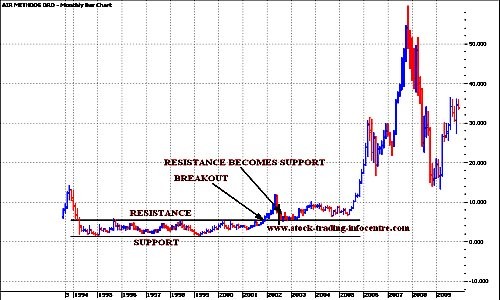The Rectangle Formation
Post on: 16 Март, 2015 No Comment

The rectangle is a classical technical analysis pattern described by horizontal lines showing significant support and resistance. It can be successfully traded by buying at support and selling at resistance or by waiting for a breakout from the formation and using the measuring principle. (To brush up on support and resistance, read Support And Resistance Reversals .)
The Rectangle in Classical Technical Analysis
The rectangle formation is an example of a price pattern in technical analysis. Price patterns derive from the work of Richard Schabaker, considered the father of technical analysis, and Edwards and Magee, who wrote what many consider the bible on the subject. (To learn more about technical analysis, see our Technical Analysis tutorial.)
This period of technical analysis derives from a time when charts were kept by hand on graph paper and even simple moving averages (SMA) had to be maintained by hand or with the use of a large, clunky adding machine. (To learn more about how technological advances changed the world of finance, read From The Printing Press To The Internet and The History Of Information Machines .)
Rather than modern technical analysis, which relies on indicators. such as m oving average convergence divergence ( MACD), technical analysts assumed that price patterns repeat themselves over and over throughout time. Pattern recognition meant pattern prediction and thus trading profit. (Learn more about moving averages in Moving Average MACD Combo and our Moving Averages tutorial.)
Many of the price patterns are based on geometrical figures. There are ascending, descending and symmetrical triangles. pennants and wedges. Occasionally, more fancifulshapes are seen, such as the head-and-shoulders formation. (For a closer look at the head-and-shoulders pattern, read Price Patterns — Part 2 .)
The Rectangle: Supply and Demand in Balance
A price chart or graph may be thought of as an X-ray of supply and demand. Figure 1 describes a rectangle pattern where supply and demand are in approximate balance for an extended period of time. The shares move in a narrow range. hitting resistance at the rectangle’s top and finding support at its bottom. The rectangle can occur over a protracted period of time or form quickly amid a relatively wide-ranging series of bounded fluctuations. Schabaker notes that it can approach a square in its proportions. In any case, it is a pattern which shows trader indecision, one in which the bulls and bears are approximately equally powerful. (For a refresher on supply and demand, read Economics Basics: Demand And Supply .)
Figure 1
Most technicians agree, the rectangle can serve as either a reversal or continuation formation. As a reversal pattern, it ends a trend either up or down. As a continuation pattern, it signifies a pause in the prevailing trend, with the expectation that the prior trend will eventually resume. In either case, the rectangle shows a tug of war between buyers and sellers. Ultimately, either accumulation or distribution prevails, and the shares breakout or breakdown. (Read more about how to profit during breakouts and breakdowns in Trading Failed Breaks . Learn about confirming trends in Trend-Spotting With The Accumulation/Distribution Line .)
Significant Support and Resistance
The concepts of support and resistance are critical to understanding the rectangle formation.
- Support is defined as any price point below the current market price where buying should emerge to create, at least temporarily. a pause in a downtrend .
- Resistance, on the other hand, is any price above the current market price where selling should emerge to create, at least temporarily. a pause in an uptrend .
In a rectangle, what may be referred to as significant support or resistance emerges — that is, a price level returned to again and again. Whereas trendlines in technical analysis are typically drawn on a diagonal, the diagramming of support and resistance requires horizontal trendlines. (Read more in Track Stock Prices With Trendlines .)














